 NickerViews is a series of interviews with horse folks in the Cayuse Communications family. These interviews consist of 14 set questions. Our next interviewee is Dr. Rebecca Gimenez Husted. Husted was a popular presenter at the 2018 Best Horse Practices Summit. A Georgia resident, she is the president of Technical Large Animal Emergency Rescue and presents internationally.
NickerViews is a series of interviews with horse folks in the Cayuse Communications family. These interviews consist of 14 set questions. Our next interviewee is Dr. Rebecca Gimenez Husted. Husted was a popular presenter at the 2018 Best Horse Practices Summit. A Georgia resident, she is the president of Technical Large Animal Emergency Rescue and presents internationally.
1. Tell us about yourself and your life with horses.
Despite riding all my young life, my leopard appaloosa “Mr. Brownstone” was the personal consternation that motivated me to actually learn something about equine science and behavior. He didn’t do or allow me to do all the things that my past horses put up with.
 I went to graduate school as well as started reading and attending clinics to educate myself.
I went to graduate school as well as started reading and attending clinics to educate myself.
2. Do you like group rides or riding solo? Why?
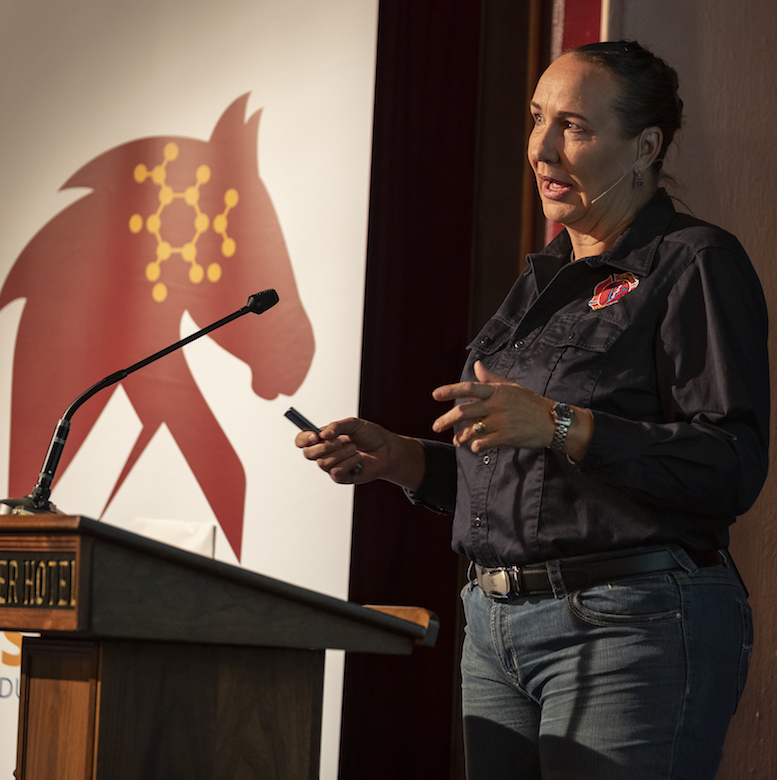
Dr. Rebecca Husted
Everyone likes riding alone with your partner, and I do as well, but I ensure that someone knows where I went and when I will return so they can come find me if there is a problem. I often ride with one or two others – and it’s pretty easy for me to limit the size of the group – I refuse to ride with anyone that won’t wear a helmet. Period. I’ve attended accidents where people ended up shitting and drooling the rest of their way too long life. No, I don’t want to be scooping your brain matter out of your mouth on my vacation.
3. What do you recall has your finest horsemanship moment?
1st best moment: Every time I get on Onyx, my Hanoverian. We played on the ground and worked together for several years after I got her as a project horse to ensure she was calmer, happier and willing to have me be her partner in anything. We rebuilt her foundation to not be fearful and she taught me so much about how much drift and time a horse can need.
When I finally got on her and we walked in a circle the first time – she was in a bareback pad and a halter and she totally owned it. We have never looked back. It made every minute up to that worth the focus on my part.
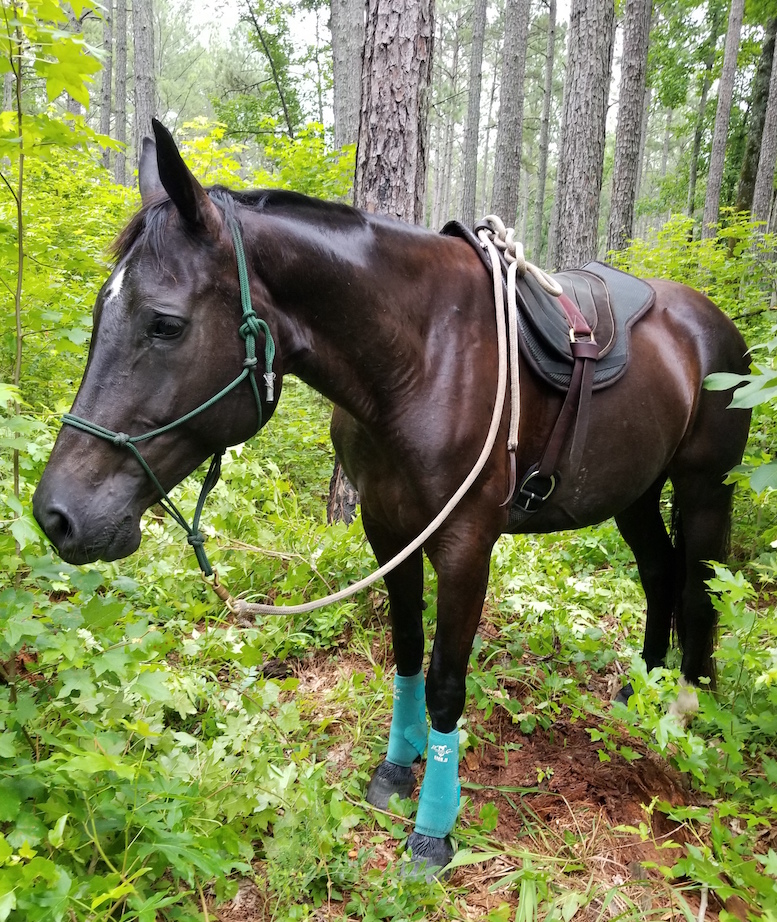
Husted’s horse Onyx waits patiently
Since then she’s never let me down and I work hard to ensure I am worth her trust.
2nd best moment: When my dad at 65+ asked for some help in natural horsemanship. After a lifetime of riding he saw that what I was doing with my horses – was making a difference in my relationship and riding. He was going to give up riding because he was so frustrated. I got him involved in learning some simple changes to his approach and he is still riding at 81 years of age!
4. What’s your worst horsemanship moment?
Just about everything I did as a teenager. We didn’t know anything except what we had learned from “horse people” 99% of which was totally uneducated and not based on horsemanship. From using hackamores to deworming practices to feeding methods – we did horseMASTERSHIP like everyone else did – and we got the predictable results.
We loved our horses and we thought we were doing the best for them. But I look back and realize we had no idea what we were doing and we were just lucky. We built a relationship with our horses over time but it wasn’t what it could have been. I am sad for what I cannot go back and change.
5. What frustrates you most in the horse world?
Horse people listening to other horse people, not being educated in equine SCIENCE, in equine PHYSIOLOGY and ANATOMY and MEDICINE. Mostly – that with all of the resources available to horse people that they do not READ or educate themselves – they ask their silly neighbor.
In any other expertise in the world, you ask for help from a professional. But our “professionals” just hang a sign up and start charging. There is no agreed-upon educational track for true expertise in any aspect of the horse industry. And the things I hear people talk about are so easy to change with small amounts of help – but require a change in ATTITUDE towards learning that is difficult to get.
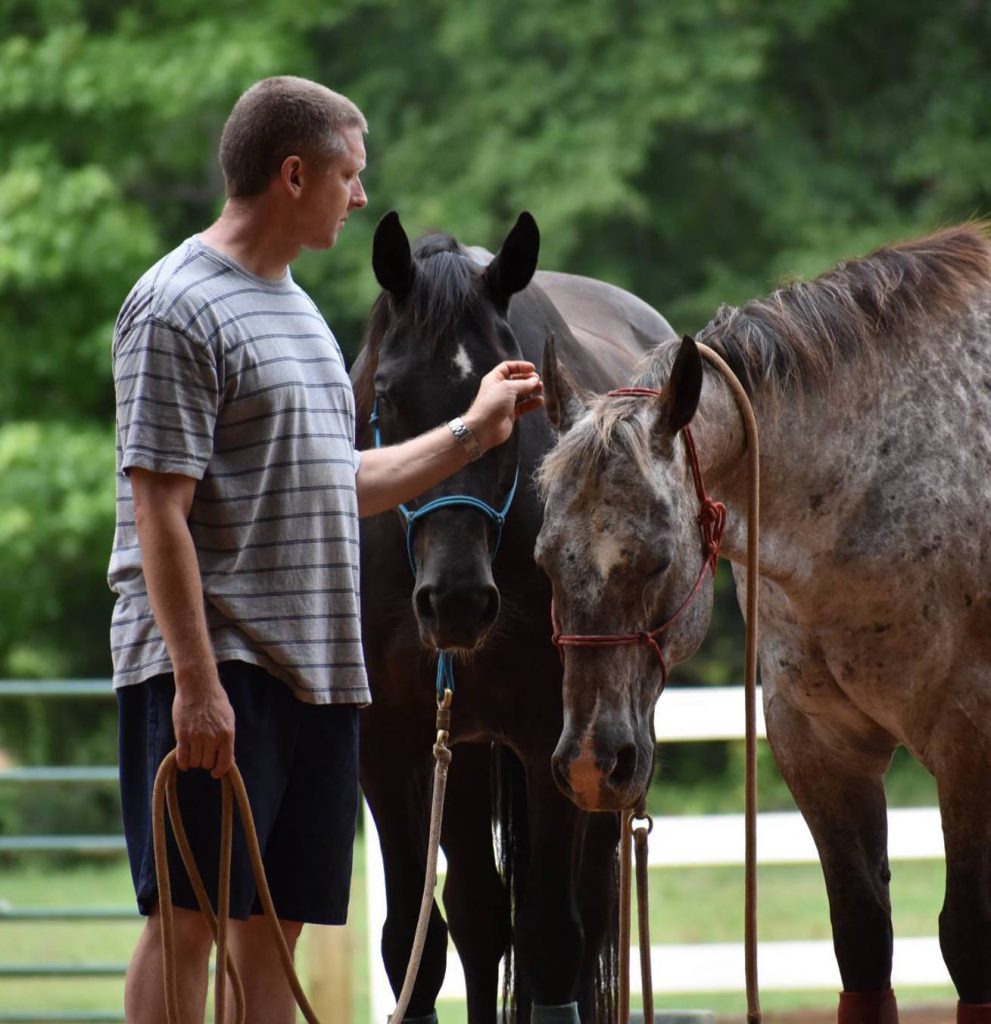
Mark Husted at a clinic
I confess – I actually haven’t let my husband, Mark, go to any horse events that involve HORSE PEOPLE doing the things that normal horse people do. I want to ensure that his foundation is totally soft and attentive to what the horse is telling him, so that when we finally go out to public events he knows what to expect and can frame the answers better.
6. What inspires you most in the horse world?
The efforts by so many (horsemen and women, farriers, veterinarians) to educate themselves about horses in a more natural way – from feeding regimes to riding equipment to boarding/pasturing in a way that gets back to their original roots – making them healthier emotionally, psychologically, and physically.
7. Tell us about your favorite hat/helmet when riding? Why?
Helmet. It is sexy. Period. Please wear a helmet. What’s not sexy is to see someone in a hospital on an electroencephalograph or in physical therapy after their brain injury. This is a test of our vicarious learning ability: do you really have to be injured before you put on a helmet?
8. What kind of saddle to you prefer to ride in? Please describe.
Parelli bareback pad. I use it for trail riding, pleasure riding. I use a hex-cell pad underneath it to distribute weight and keep the bottom of the pad cleaner of hair and sweat.
Note: I have purchased and tried every other conceivable bareback pad from fleece to leather since I was a kid. I didn’t own a saddle until I was 13.
9. What’s in your saddle bag?
Knife, cell phone, extra hydration, granola, small medical items, hand cutter for limbs, whistle, extra leadrope.
Note: I keep the saddle bag on my husband’s horse’s saddle when trail riding (since I ride in a bareback pad).
10. What’s your favorite ingredient as trail food?
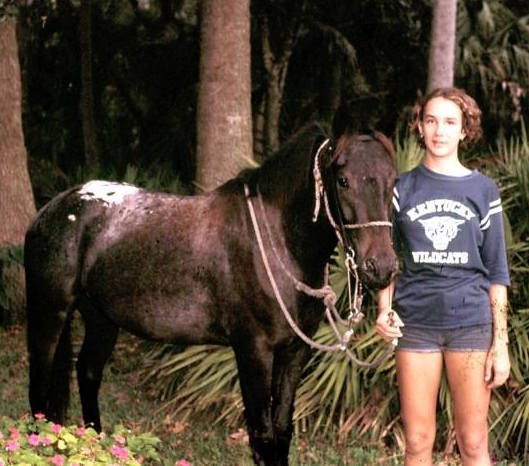
Husted as a girl with her horse, Beau
Oat based granola.
11. What’s ingredient will wreck an otherwise delicious trail mix?
Almonds.
12. Where would you like to be (in the horse world/with your horses and horsemanship) in 5 years?
I’d love for people to recognize that TLAER isn’t for just veterinarians and firefighters. I want them to see that the prevention and planning part is the owner part of the response cycle for caring for their horses. I want to continue learning and making the time to play with my horses to be able to enjoy riding with my husband and sharing the joy that I get from riding the trails safely. As we approach retirement age, we want to travel more and take our horses with us.
13. What’s something on your bucket list?
Botswana – trail riding with the Big 5 land mammals, especially elephants and giraffes, before Angola totally destroys the water source for the Okavango Delta with their mining and garbage and before we overpopulate the planet with humanity to the point it can’t recover. NOTE: I would love to set up a group travel with a company like Equitours and make the time between rides (hot part of the day) for educational presentations on horsemanship, etc.
14. What’s the most recent thing you’ve learned (related to horse work).
- That horses have to chew to salivate. I have a horse that salivates at feeding time – but apparently that is under the influence of masticating movements of his jaw.
- That all the efforts to educate about TLAER are making a difference – I got drone photos from a overturned cattle trailer scene with firefighters – and they were doing just about everything we talk about. Yay! It’s getting out there!
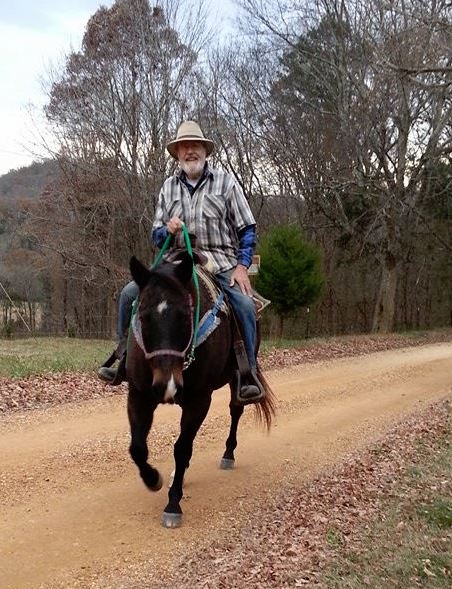
Rebecca’s father enjoys a ride (without a helmet, much to her chagrin)
Thank you for sharing this interview – it was fun! Glad to connect with so many like-minded folks thru Nicker News.
When I send this to my parents – MAYBE my dad will start wearing a helmet? LOL – but he looks so happy and I just HOPE I can still be riding at 82 years of age!